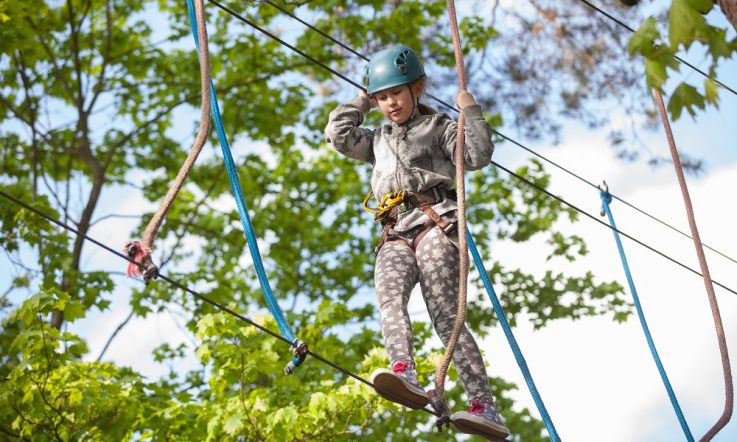School climate is often described as the ‘quality and character of school life', including both social and physical aspects of the school, that can positively promote behaviour, school achievement, and the social and emotional development of students.
It is typically influenced by perceptions of school safety, order and behavioural expectations; academic outcomes; social relationships; school facilities; school connectedness and school improvement processes (Gruenert, 2008, Zullig et al., 2010, Thapa et al., 2013).
A sustained positive school climate promotes students' social, mental and emotional development, and behavioural and learning outcomes, while guaranteeing both physical and social safety (Zullig et al., 2010, Loukas and Robinson, 2004). Some of the benefits of a positive school culture for students include:
- Improved academic achievement and performance;
- Adaptive psychosocial adjustment;
- Satisfaction with school;
- Sense of belonging;
- Academic value;
- Self-concept;
- Motivation to learn;
- Decreased behavioural problems; and
- Overall positive health and wellbeing.
A positive school environment can also reduce teacher burnout, promote teacher retention and enhance parent-school partnerships (Zullig, Huebner, and Patton, 2011; Roeser, Eccles, and Freedman-Doan, 1999; Vieno, et al., 2005; MacNeil, Prater, and Busch, 2009; Wang, et al., 2010; Grayson, and Alvarez, 2008; Cohen, et al., 2009).
The transition from primary to secondary can significantly affect the psychological, social and intellectual wellbeing of some students. Barber and Olsen (2004) aptly describe the stage as ‘one of the defining parameters of development in the second decade of life'. It is considered to be one of the most challenging times to match developmental needs with school structures (Brinthaupt, Lipka and Wallace, 2007).
Components of school climate including relationships, sense of safety, and sense of belonging to the school are interrelated factors that need support during this transition period.
A study in West Australian schools investigated students' perception of the components of school climate that can affect their own mental and emotional wellbeing outcomes during the transition process (Lester and Cross, 2015). Having peer support was found to be the most significant protective factor for students' mental and emotional wellbeing over the transition period.
Interestingly, feeling safe at school and feeling connected to school were the school climate factors found to be most protective of students' mental and emotional wellbeing following transition. The extent to which young people feel supported by their teachers was also found to be protective of their emotional wellbeing.
Strategies to improve school climate for transition students
Strategies to improve the school climate for students transitioning into secondary school need to focus on the quality of the school's pastoral care strategies and physical environment (Waters, Cross and Shaw, 2010).
Peer support can be enhanced by encouraging cross-age integration to build multi-age friendships, and by encouraging interaction between families, teachers and students. Designing the curriculum to encourage co-operative and helpful behaviour, actively promoting peer support and student counselling services and reinforcing the importance of engaging in extracurricular activities is also a good idea.
Students' feelings of safety can be enhanced by having fairer and more consistently applied school discipline policies, and by consistently providing teachers and other staff support for students (Samdal, et al.,1998).
The school's environment and the care taken by the school community to maintain school grounds can also improve students' connectedness with the school (Waters, Cross and Shaw, 2010). Teachers can increase their connectedness with students by using opportunities such as yard duty, house days and home room groups to get to know students better. They can do this by giving authentic positive feedback and encouragement, actively listening, showing they respect and care, and providing interactive teaching and learning styles.
This is particularly important for students who are new to secondary school. By encouraging and scaffolding students' learning to enable them to achieve their highest academic potential, and encouraging participation in extracurricular activities, students' perception of connectedness to school can significantly be enhanced (Waters, Cross and Shaw, 2010, Hamilton, et al., 2003).
Students who are transitioning from primary to secondary school who have positive perceptions of the school climate are significantly more likely to also have higher levels of mental and emotional wellbeing.
References
Barber, B.K. & Olsen, J.A. (2004). Assessing the Transitions to Middle and High School. Journal of Adolescent Research. 19(1), 3-30.
Brinthaupt, Lipka, T., R. & Wallace, M. Aligning student self and identity concerns with middle school practices, in The young adolescent and the middle school, S. Mertens, S., Anfara Jnr, V. and Caskey, M. Eds. (2007), Information Age Publishing: Charlotte, USA.
Cohen, J., McCabe, L., Michelli, N. M., & Pickeral, T. (2009). School climate: Research, policy, practice, and teacher education. The Teachers College Record, 111(1), 180-213.
Grayson, J.L. & Alvarez, H.K. (2008). School climate factors relating to teacher burnout: A mediator model. Teaching and Teacher Education, 24(5), 1349-1363.
Gruenert, S., (2008). School culture, School climate : They are not the same thing. Principal.
Hamilton, G., Cross, D., Hall, M., & Townsend, E. (2003). The role of extra-curricular activities in reducing smoking among adolescents: Final report.Western Australian Centre for Health Promotion Research, School of Public Health, Curtin University of Technology: Perth, Western Australia.
Lester, L. & Cross, D. (2015). The relationship between school climate and mental and emotional wellbeing over the transition from primary to secondary school. Psychology of Well-Being: Theory, Research and Practice, 5(9).
Loukas, A. & Robinson, S. (2004). Examining the moderating role of perceived school climate in early adolescent adjustment. Journal of Research on Adolescence, 14(2), 209-233.
MacNeil, A.J., Prater, D.L. & Busch, S. (2009). The effects of school culture and climate on student achievement. International Journal of Leadership in Education, 12(1), 73-84.
Roeser, R., Eccles, J. & Freedman-Doan, C. (1999). Academic Functioning and Mental Health in Adolescence: Patterns, Progressions, and Routes from Childhood. Journal of Adolescent Health, 14, 135-174.
Samdal, O., Nutbeam, D., Wold, B., & Kannas, L. (1998). Achieving health and educational goals through schools—a study of the importance of the school climate and the students' satisfaction with school. Health education research, 13(3), 383-397.
Thapa, A., Cohen, J., Guffey, S., & Higgins-D'Alessandro, A. (2013). A review of school climate research. Review of Educational Research, 83(3), 357-385.
Vieno, A., Perkins, D. D., Smith, T. M., & Santinello, M. (2005). Democratic school climate and sense of community in school: A multilevel analysis. American Journal of Community Psychology, 36(3-4), 327-341.
Wang, M. T., Selman, R. L., Dishion, T. J., & Stormshak, E. A. (2010). A tobit regression analysis of the covariation between middle school students' perceived school climate and behavioral problems. Journal of Research on Adolescence, 20(2), 274-286.
Waters, S., Cross, D. & Shaw, T. (2010). Does the nature of schools matter? An exploration of selected school ecology factors on adolescent perceptions of school connectedness. British Journal of Educational Psychology, 80, 381-402.
Zullig, K.J., Huebner, E.S. & Patton, J.M. (2001). Relationships among school climate domains and school satisfaction. Psychology in the Schools, 48(2), 133-145.
Zullig, K. J., Koopman, T. M., Patton, J. M., & Ubbes, V. A. (2010). School climate: Historical review, instrument development, and school assessment.Journal of Psychoeducational Assessment, 28(2), 139-152.
What systems does your school have in place to support students’ emotional wellbeing during transition?
Are cross-age relationships and friendships encouraged at your school?
Is the discipline policy at your school applied consistently?



